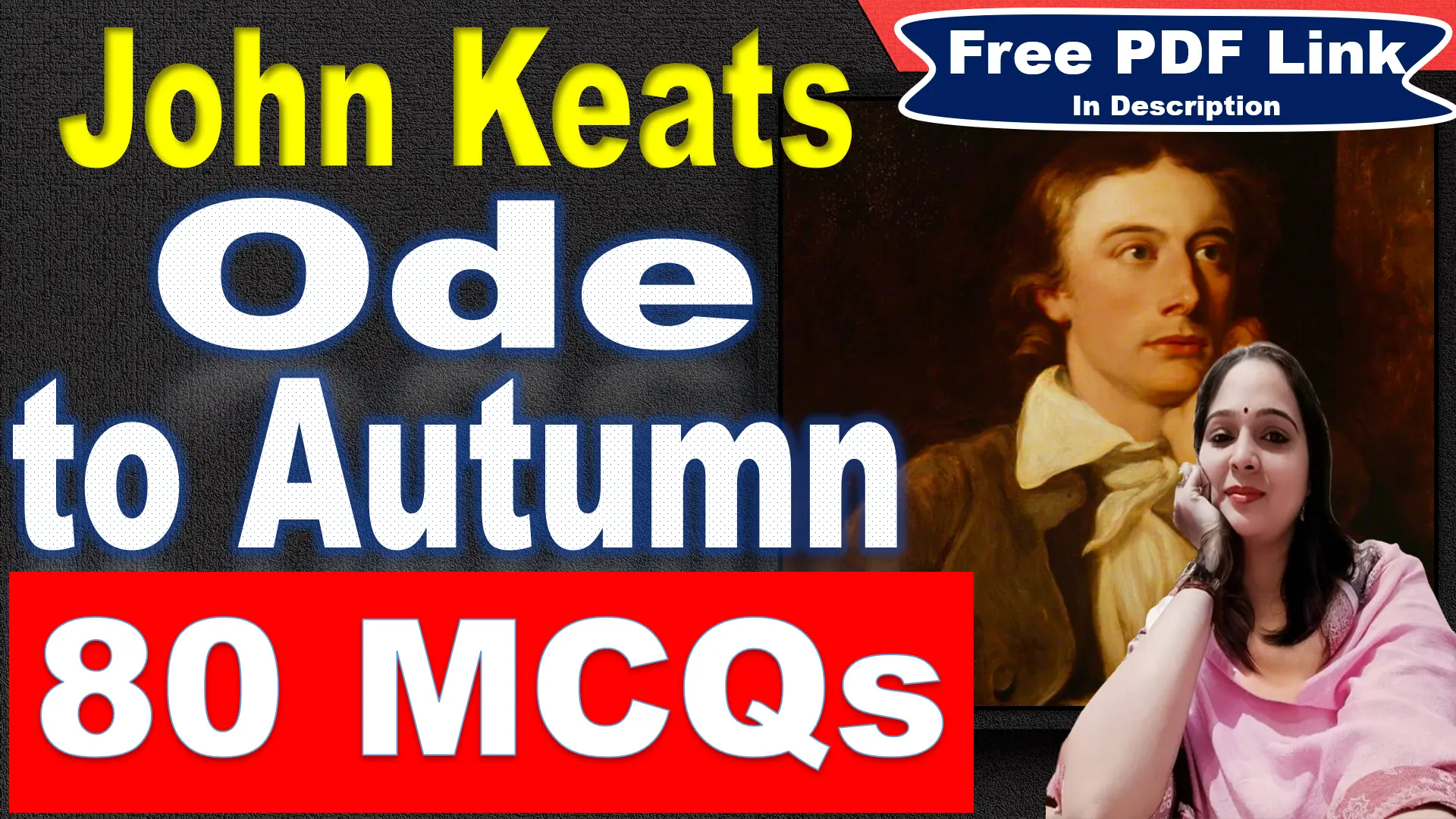
The Last Ride Together Summary
The Last Ride Together, published in 1855, is one of Robert Browning’s notable works from his collection Men and Women. Released in London by Chapman & Hall, this collection was a defining moment in Browning’s career, featuring fifty-one poems that explore themes like love, ambition, faith, and the complexities of human emotions. His wife, Elizabeth Barrett Browning, greatly influenced his work, and this collection, dedicated to her, showcases some of his most personal and introspective poetry. Through Men and Women, Browning’s ability to capture depth in human experiences shines, making it a landmark piece in his legacy.
In The Last Ride Together, Browning employs his classic style of dramatic monologue, where the speaker reveals private, reflective thoughts to an unseen listener—his beloved. Although it didn’t initially gain widespread attention, the poem later became celebrated for its philosophical take on love, loss, and the quest for meaning. As Browning’s reputation grew toward the late 19th century, The Last Ride Together became recognized as one of his finest works, illustrating his talent for introspection and his innovative use of dramatic monologue.
In the poem, Browning tells the story of a man who, after experiencing rejection in love, asks for one last shared moment—a final ride with his beloved. Even though his love remains unreturned, he holds on to this chance to savor their connection, however brief it may be. This ride becomes a moment of reflection, as he contemplates the complexities of their unfulfilled relationship.
As they ride together, he considers missed opportunities, wondering if different choices could have led her to love him. Ultimately, he accepts that life is full of uncertainties and unrealized dreams. Simply being by her side fills him with a sense of contentment, encouraging him to embrace the present moment rather than dwell on regrets.
The poem also expands to reflect on human ambition and the limitations of success. The speaker notes how people—whether soldiers or artists—often pursue lofty goals, yet rarely reach perfection. In contrast, he finds his simple joy in this ride to be more meaningful, untouched by society’s expectations of achievement or glory.
As they continue riding, he ponders the nature of happiness, questioning whether simple, earthly joys like this one may be more satisfying than any idealized version of heaven. He imagines a heaven that mirrors this ride—a place where they could “ride, ride together, for ever ride,” a vision of eternity that feels like an endless journey, shared and fulfilling.
Browning’s poem captures the bittersweet beauty of transient moments, suggesting that real contentment may come from acceptance rather than striving for grand achievements. In the end, the speaker finds peace in the idea that even a brief, imperfect love can hold deep significance. Through this final ride, he embraces life’s limitations, letting go of regrets and simply enjoying the presence of his beloved, finding meaning in the present rather than in unattainable ideals.
Key Points
Author
Robert Browning (1812–1889): A prominent Victorian poet known for his use of dramatic monologue to explore psychological and philosophical themes.
The Last Ride Together was published in Browning’s 1855 collection, Men and Women, which showcases some of his finest monologues and examines complex human emotions and relationships.
Form (Rhyme Scheme)
Form: The poem is a dramatic monologue, a form in which a single speaker directly addresses an unseen listener, revealing his thoughts and emotions.
Rhyme Scheme: Each stanza follows an AABBCDDEEEC rhyme scheme, giving the poem a structured yet flowing musicality.
Meter: The poem generally uses iambic tetrameter (four metrical feet per line), which contributes to the smooth, contemplative rhythm fitting the speaker’s reflective journey.
Speaker
Unidentified Male Lover: The speaker is a man who has been rejected by his beloved, left to reflect on his unfulfilled love and desires.
Philosophical and Reflective: Through his inner monologue, he explores broader questions about life, fulfillment, and the nature of human aspirations.
Setting
Imagined Ride with His Beloved: The poem’s setting is both physical and metaphorical, as the speaker describes a literal final ride with his beloved while also taking a reflective “ride” through his own thoughts.
Ambiguous Time and Place: The ride takes place in an unspecified location and time, creating an idealized, almost timeless quality.
Theme
Unrequited Love and Acceptance: The speaker grapples with his unreturned love, gracefully accepting this loss and seeking solace in a final shared experience.
The Quest for Fulfillment: The poem examines the universal human desire for purpose and happiness, acknowledging that even the most ambitious pursuits often fall short.
Beauty in Fleeting Moments: Browning suggests that true joy may lie in transient, cherished experiences rather than in unattainable ideals.
Life vs. Art: The speaker contrasts his contentment in the present moment with the ambitions of artists, soldiers, and statesmen, questioning whether lofty aspirations lead to greater fulfillment.
Plot
Stanza 1: The speaker accepts his beloved’s rejection and, instead of resentment, he requests one final ride together to create a lasting memory of their relationship
Stanza 2: His beloved hesitates but eventually agrees. Her intense gaze fills him with hope, giving him a renewed sense of purpose as they begin their ride.
Stanza 3: The speaker idealizes the moment, comparing his beloved to a radiant, heavenly vision. Her closeness feels almost divine, bringing him immense joy.
Stanza 4: As they ride, he reflects on his life, wondering if he could have done things differently to win her love. He ultimately lets go of these regrets, choosing to embrace the present moment.
Stanza 5: The speaker contemplates the universal nature of human striving and failure, finding comfort in knowing that everyone, not just himself, struggles to achieve their desires.
Stanza 6: He compares his own fulfillment with the incomplete ambitions of statesmen and soldiers, who often find their grand pursuits fall short. He values his ride with his beloved as more meaningful.
Stanza 7: Turning to poets and artists, he reflects on their dedication to capturing beauty. He questions whether their pursuit of perfection is truly fulfilling, contrasting it with his satisfaction in the simple experience of riding.
Stanza 8: The speaker imagines an ideal state of happiness and questions if heaven, or a perfect life, would be more satisfying than the beauty of transient, earthly joys.
Stanza 9: He wonders if this present moment, in which they ride together in harmony, could itself be a form of heaven, where they remain forever fixed in admiration and contentment.
Stanza 10: Finally, the speaker envisions an eternal ride with his beloved, where they could “ride, ride together, for ever ride.” This vision represents his ultimate idea of heaven—a continuous, shared journey, rather than a distant paradise.
Tone
Reflective and Contemplative: The tone is thoughtful, as the speaker explores his feelings about love, life, and the pursuit of happiness.
Bittersweet: While there is sadness in his acceptance of unrequited love, the speaker’s tone remains calm and dignified, embracing the beauty of the moment.
Philosophical: The poem’s contemplative nature is marked by deep questions about life’s purpose and the meaning of success.
Style
Dramatic Monologue: The speaker’s internal reflections provide insight into his personal thoughts and emotions, with no external narration.
Rich Imagery and Metaphor: Browning uses vivid imagery (e.g., “life’s flower,” “glory-garland”) and metaphors to convey the speaker’s emotional and philosophical journey.
Rhetorical Questions and Hypotheticals: The speaker frequently uses rhetorical questions (e.g., “Who knows what’s fit for us?”) to explore themes of unfulfilled desire and human aspiration.
Message
Fulfilment in the Present Moment: Browning suggests that true happiness may lie in savouring life’s fleeting, meaningful moments rather than in lofty ambitions.
Acceptance of Imperfection: The poem conveys that life’s beauty often lies in accepting limitations, as the pursuit of perfection can be unfulfilling.
Redefining Heaven: Instead of a distant paradise, heaven might be found in deeply cherished experiences, where love and connection become timeless.
This structure captures the essence of Browning’s exploration of love, human aspiration, and the acceptance of life’s imperfections, as the speaker finds solace in one final, shared experience with his beloved.
Robert Browning
Robert Browning (1812–1889) was a remarkable English poet and playwright celebrated for his skill in dramatic monologue and his profound psychological insight. Widely regarded as one of the foremost poets of the Victorian era, Browning’s works probe deeply into human emotions, moral dilemmas, and philosophical reflections. His poetry often provides a window into his characters’ inner worlds, revealing their concealed thoughts and motivations through their words.
Early Life and Education
Born on May 7, 1812, in Camberwell, London, Browning grew up in a family that nurtured his intellectual pursuits. His father, a clerk with a passion for book collecting, gave young Browning access to an extensive library. This wealth of literature fueled Browning’s early literary development. Educated primarily at home, he showed early promise in languages and the arts. Although he briefly attended the University of London, he soon left to pursue self-guided learning, finding academic structures too restrictive.
Career and Major Works
Early Career: Browning’s initial works, like Pauline (1833) and Paracelsus (1835), garnered limited attention. His ambitious narrative poem Sordello (1840) was met with criticism due to its complex language and dense style, which contributed to his slow rise in the literary world.
Mastery of Dramatic Monologue: Browning truly found his artistic voice through dramatic monologues. This format, in which a single speaker addresses an implied listener, allowed Browning to capture intricate psychological details and moral conflicts, establishing him as a leading figure in this genre.
Notable Works: Among Browning’s most famous poems are:
My Last Duchess: A monologue that subtly exposes the speaker’s jealousy and control issues.
Porphyria’s Lover: A haunting piece that delves into themes of love, obsession, and power.
The Last Ride Together: A reflective poem on unfulfilled love, aspiration, and human longing.
The Ring and the Book (1868–1869): This 12-part epic revolves around a murder trial and showcases Browning’s skill in portraying multiple perspectives and motives.
Marriage to Elizabeth Barrett
In 1846, Browning married Elizabeth Barrett, an acclaimed poet in her own right. Their marriage was not only a personal partnership but also a powerful literary alliance, marked by shared intellectual and creative pursuits. The couple settled in Italy, where they lived until Elizabeth’s passing in 1861. Her literary success initially eclipsed Browning’s, but she significantly influenced his evolving poetic style, bringing maturity and introspection to his work.
Later Life and Legacy
After Elizabeth’s death, Browning returned to England, where his reputation grew, and by the 1860s, he had become a central voice in Victorian poetry. His later works, such as Dramatis Personae (1864) and Asolando (1889), continued to explore the intricacies of moral questions and psychological realism. He died on December 12, 1889, and was laid to rest in Westminster Abbey’s Poets’ Corner.
Style and Influence
Dramatic Monologue: Browning popularized this form, using it to examine the minds of morally complex individuals. Psychological Exploration: His poetry often addresses themes like ambition, love, jealousy, and the darker aspects of human nature. Philosophical Inquiry: Browning’s work reflects his fascination with truth, the limits of human understanding, and life’s search for purpose. Language and Form: Renowned for his vivid imagery, varied rhythms, and intricate language, Browning’s style demands attentive reading, rewarding readers with deep thematic insights.
Legacy
Browning’s influence on poetry is profound, particularly in psychological realism and character-focused narrative. His dramatic monologues remain celebrated for their insight into the human psyche. Today, Robert Browning stands among the giants of Victorian poetry, his legacy enduring alongside that of Elizabeth Barrett Browning, Alfred Lord Tennyson, and Matthew Arnold, marking his place in English literature with a voice both unique and deeply insightful.
Word Meaning
| Tough Word | Meaning in English | Meaning in Hindi |
| ‘Tis | It is | यह है |
| At length | Finally, after a long time | अंत में |
| Nothing all my love avails | My love has no effect or result | मेरा प्यार बेकार है |
| Beside | Next to, or compared to | बगल में, या तुलना में |
| Mistress | A woman who is loved or admired | प्रेमिका |
| Demurs | Raises doubts or objections | संकोच करना |
| Pity | Compassion or sympathy | दया |
| Fixed me | Captivated or held me | मुझे बांध लिया |
| A breathing-while | A brief moment | एक क्षण |
| Replenished | Filled up again | पुनः भर दिया |
| Vain | Useless, without success | व्यर्थ |
| Deified | Made divine or god-like | देवत्व प्रदान किया |
| Hush | Silence | शांति |
| Billowy-bosomed | Having a swelling, wave-like form | लहरों सा उभरा |
| Over-bowed by many benedictions | Overcome with many blessings | आशीर्वादों से झुका हुआ |
| Conscious | Aware | सचेत |
| Passion | Intense emotion or love | जुनून |
| Drew | Pulled or attracted | खींचा |
| Leant | Leaned | झुका |
| Linger’d | Delayed or stayed | रुका |
| Cramp’d scroll | Tight or restricted writing | संकुचित लेखन |
| Fluttering | Moving lightly and quickly | फड़फड़ाना |
| Strive | Make great efforts | प्रयास करना |
| Awry | Out of place, not as intended | टेढ़ा |
| Befell | Happened, occurred | घटित हुआ |
| Flew | Moved swiftly | उड़ गया |
| Bear up | Endure, withstand | सहन करना |
| Petty | Small or insignificant | छोटा, नगण्य |
| Undone vast | Immense, left unfinished | विशाल, अधूरा |
| Conceived | Created or thought of | कल्पना की |
| Fleshly screen | The physical body | शरीर |
| Bosom | Chest or heart | ह्रदय |
| Heave | Rise and fall | उठना-गिरना |
| Ten lines, a statesman’s life in each! | Each line representing an important moment | प्रत्येक पंक्ति में एक जीवन घटना |
| Heap | Pile | ढेर |
| Atones | Compensates | प्रायश्चित करना |
| Abbey | A church building | मठ |
| By their leave | With their permission | उनकी अनुमति से |
| Nay | No | नहीं |
| Ere | Before | पहले |
| Sublime | Noble, majestic | महान |
| Venus | Roman goddess of love | प्रेम की देवी |
| Whence | From where | जहां से |
| Yonder | Over there | वहाँ |
| Fords the burn | Crosses a small stream | छोटी नदी को पार करना |
| Acquiesce | Agree or accept quietly | सहमति देना |
| Repine | Complain or feel discontent | शिकायत करना |
| Opera’s strains | Sounds of the opera | ओपेरा की धुन |
| Intend | Plan, aim | इरादा रखना |
| In fine | In conclusion, finally | अंत में |
| Bliss | Great happiness | आनंद |
| Sublimate | Elevate to a higher level | उच्च बनाना |
| Signed the bond | Made a commitment | समझौते पर हस्ताक्षर करना |
| Dim-descried | Faintly seen | धुंधला दिखाई दिया |
| Glory-garland | Symbolic wreath of honor | सम्मान का माला |
| Descry | Perceive or notice | देखना, पहचानना |
| Sink back | Recline or fall back | वापस गिरना |
| Shuddering | Trembling with emotion | कांपना |
| Quest | Search | खोज |
| Whither | To where | कहां |
| Discern’d | Perceived or recognized | पहचाना |
| Abide | Remain, endure | ठहरना, टिके रहना |
| Degree | Extent or level | स्तर |
| Eternity | Infinite time, forever | अनंत काल |





